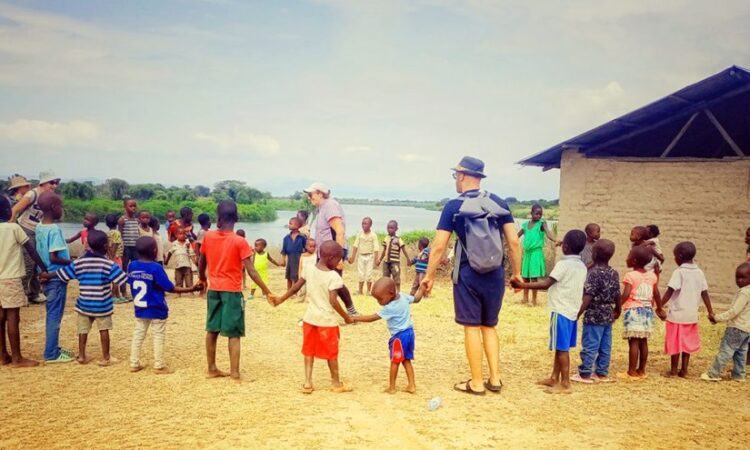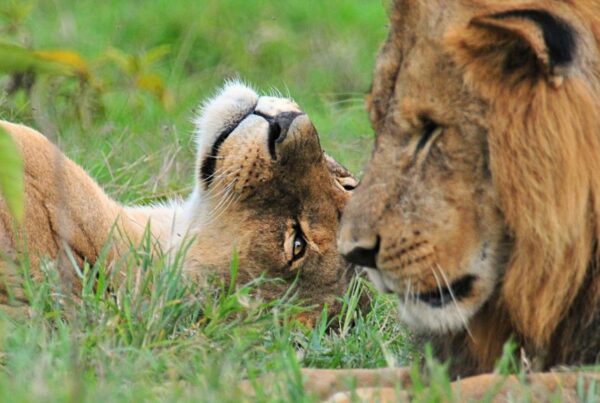Community Tours around Queen Elizabeth National Park
Beyond the Wilderness – Engaging with Culture
When one imagines Queen Elizabeth National Park, visions of elephants, lions, hippos, and tree-climbing lions often dominate the mind. Yet beyond the untamed wilderness lies another dimension of exploration that enriches the safari experience—community tours. These cultural journeys reveal the interwoven relationship between humans and nature, providing visitors with insight into the traditions, daily lives, and resilience of the communities living on the periphery of the park.
Community tours around Queen Elizabeth transform travel from passive observation into immersive engagement. The narrative of wildlife conservation is inseparable from the stories of local people, whose knowledge, stewardship, and traditions shape the landscapes travelers explore. Villages nestled along the Kazinga Channel, near the Ishasha sector, or within the foothills of the Rwenzori Mountains, are alive with history, crafts, and rituals that have been passed down through generations.
By participating in community tours, travelers witness a different form of richness—one measured not in the number of species encountered but in the depth of human connection and cultural understanding. The experience fosters empathy, education, and sustainable development while offering a rare lens through which Uganda’s soul can be perceived.
Understanding the Communities Around Queen Elizabeth
The communities surrounding Queen Elizabeth National Park are as diverse as the landscapes themselves. Primarily composed of subsistence farmers, fishermen, and small-scale traders, these populations have developed adaptive strategies to coexist with the wildlife that roams the park. Their knowledge of natural cycles, animal behavior, and environmental stewardship is extensive, often passed down orally across generations.
The Batwa, one of Uganda’s indigenous groups, have historically inhabited the forests near Bwindi and the southern Ishasha region. Their traditional knowledge, spiritual beliefs, and practices offer valuable insights into forest ecology, medicinal plants, and sustainable resource management. Other communities, such as the Bakiga, Bafumbira, and Banyankole, maintain agricultural lifestyles and rituals that are intimately connected to the land. These communities rely on the fertile soils surrounding Queen Elizabeth for crops such as bananas, maize, beans, and sweet potatoes.
Understanding these communities provides context to the conservation successes of Queen Elizabeth National Park. Human-wildlife conflicts, land-use planning, and tourism development are all shaped by the interactions between these people and their environment. Community tours, therefore, do more than entertain—they educate and cultivate an appreciation for sustainable coexistence.
Types of Community Tours
Community tours around Queen Elizabeth National Park are varied, offering opportunities for participation in daily life, cultural performances, and conservation projects. One category involves village visits, where travelers witness traditional farming techniques, learn about local culinary practices, and engage in storytelling sessions that preserve historical narratives. Guests are introduced to the social structures of the villages, understanding the roles of elders, women, and youth in maintaining cohesion and cultural heritage.
Another form of community engagement centers on arts and crafts. Many villages are renowned for weaving, basketry, pottery, and beadwork, each reflecting centuries-old techniques and aesthetic values. Visitors can observe artisans at work, gain hands-on experience, and purchase authentic crafts directly from the creators, ensuring that revenue benefits the local economy.
School visits and educational programs offer an additional avenue of interaction. Local schools often welcome tourists to participate in reading sessions, storytelling, or music and dance performances. These encounters provide a human dimension to conservation tourism, demonstrating how education and cultural transmission are intertwined with sustainable development.
Finally, community tours sometimes involve participatory conservation projects, such as tree planting, wetland restoration, or wildlife monitoring. These initiatives allow visitors to contribute tangibly to the protection of ecosystems while learning about the delicate balance between human needs and environmental preservation.
Cultural Immersion Along the Kazinga Channel
The Kazinga Channel, renowned for its concentration of hippos, crocodiles, and birdlife, also forms a lifeline for the communities that reside along its banks. Here, community tours often focus on traditional fishing practices, which have been refined over centuries. Travelers are shown how nets are cast, fish are smoked or dried, and communal methods ensure that resources are used sustainably.
In addition to fishing, local markets provide an opportunity to explore Ugandan trade practices. Fresh produce, handicrafts, and livestock are displayed in vibrant arrays, reflecting the ingenuity and resilience of these communities. Through guided interactions, travelers learn about the seasonal rhythms that dictate planting, harvesting, and fishing, while also gaining appreciation for the social rituals embedded in daily labor.
Cultural performances along the channel further enrich the experience. Dance, music, and storytelling highlight the community’s spiritual connection to the land and water. Traditional instruments, chants, and ceremonial attire convey meaning that extends beyond entertainment, offering profound insight into local values and cosmology.
Experiences in the Ishasha Communities
The southern Ishasha sector, famous for its tree-climbing lions, is also home to communities that have adapted to living alongside large predators. Villagers here employ strategies to minimize conflicts with wildlife, such as constructing elevated granaries, using guard animals, and maintaining designated buffer zones.
Community tours in Ishasha often involve guided walks with local residents, who provide interpretation of tracks, scat, and other signs of wildlife presence. These excursions allow visitors to understand the intimate knowledge of the land possessed by those who share it with elephants, lions, and buffaloes.
Visitors are also introduced to traditional medicinal practices, where plants are used for remedies, rituals, and nutrition. The stories surrounding these practices reflect a worldview in which nature and humans exist in a reciprocal relationship—a principle that underpins much of the community’s approach to conservation.
Culinary and Agricultural Immersion
Food is a universal bridge to cultural understanding, and in communities around Queen Elizabeth, culinary practices are deeply tied to the environment. Guests are often invited to participate in the preparation of traditional meals, using ingredients harvested from farms, gardens, or the river. Dishes such as matoke, posho, beans, and fresh fish offer not only sustenance but also insight into local tastes, techniques, and traditions.
Agricultural practices are equally educational. Farmers demonstrate terracing, crop rotation, and organic fertilization, highlighting how these methods sustain both livelihoods and the surrounding ecosystem. Seasonal variations, pest management, and the use of traditional knowledge in predicting rainfall patterns are explained, revealing an intricate understanding of land stewardship.
Conservation and Community Linkages
Community tours serve as a critical bridge between tourism and conservation. The income generated through guided visits, craft sales, and cultural experiences incentivizes local populations to protect wildlife and habitats. Communities that see direct benefits from tourism are more likely to support anti-poaching measures, engage in sustainable land management, and participate in conservation initiatives.
Programs that link community development with environmental protection are increasingly prevalent. Revenue-sharing models, microfinance projects, and education programs funded by tourism ensure that the benefits of the park extend beyond its boundaries. Through these mechanisms, visitors to Queen Elizabeth not only enjoy cultural enrichment but also contribute to the long-term preservation of both human and natural heritage.
Planning and Participating in Community Tours
The success of a community tour is enhanced by thoughtful planning. It is recommended that visits be guided by local experts who understand cultural protocols, language nuances, and ecological sensitivities. This ensures that interactions are respectful, meaningful, and mutually beneficial.
Tours are often scheduled in coordination with daily routines to minimize disruption while maximizing insight. Morning visits may coincide with farm work or market activity, while afternoons may feature craft demonstrations or cultural performances. Multi-day programs may integrate community engagement with wildlife safaris, allowing travelers to experience the full spectrum of life around Queen Elizabeth.
Participation in these tours is not passive; visitors are encouraged to ask questions, engage in activities, and reflect on the interconnectedness of community, wildlife, and landscape. By doing so, the tour becomes a two-way exchange, enriching both traveler and host.
The Role of Education in Community Tourism
Education is central to the philosophy of community tours. By understanding local traditions, wildlife management practices, and environmental challenges, visitors gain a deeper appreciation for the complex dynamics that sustain Queen Elizabeth National Park. School visits, storytelling sessions, and workshops provide platforms for knowledge exchange, where both communities and tourists share perspectives and learn from one another.
Through education, community tourism fosters long-term impact. Travelers leave with insights that extend beyond the park, while communities gain recognition, skill development, and resources that support cultural preservation and economic empowerment. The result is a cycle of engagement that benefits wildlife, people, and the broader ecosystem.
Benefits of Community Tours for Travelers
For visitors, community tours offer enrichment that complements traditional wildlife experiences. They provide context to the landscapes observed on game drives, revealing the human stories that shape the savannahs, wetlands, and forests. Travelers gain practical knowledge of agriculture, craft-making, and conservation, deepening their understanding of Uganda beyond the lens of safari vehicles.
The tours also foster empathy and connection, as interactions with local people reveal shared values, aspirations, and challenges. In this way, tourism transcends observation, becoming a vehicle for personal growth, intercultural understanding, and appreciation for the intertwined fates of humans and nature.
Beyond Wildlife – Embracing Humanity
Community tours around Queen Elizabeth National Park open a portal to a world where culture, history, and nature are inseparable. They provide a lens through which the richness of Ugandan life can be appreciated, complementing the thrill of wildlife viewing with the depth of human connection.
To explore villages, participate in traditional practices, witness crafts, and engage in conservation projects is to see Queen Elizabeth not only as a sanctuary for animals but as a living landscape sustained by its people. Each tour offers lessons in resilience, stewardship, and the enduring bond between humans and the natural world.
For those seeking a safari that combines adventure, education, and cultural immersion, it is strongly recommended that African tours and safaris be booked via WildHorn Africa. With their expertise and dedication, every community tour becomes a meaningful journey, ensuring that travelers experience the park in its fullest richness while contributing to the well-being and preservation of its communities.





 WildHorn Africa – Authentic and unforgettable tours across Africa, guided by local experts who know the land, wildlife, and culture best.
WildHorn Africa – Authentic and unforgettable tours across Africa, guided by local experts who know the land, wildlife, and culture best.


